This article has been reviewed according to Science X's editorial process and policies. Editors have highlighted the following attributes while ensuring the content's credibility:
fact-checked
trusted source
proofread
Researchers driving innovative solutions to advance use of 'plastic' roads
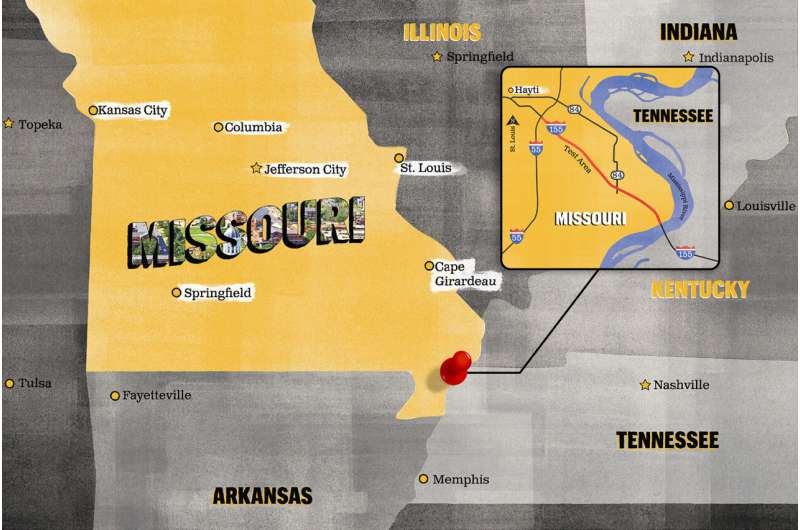
Millions of roads across the United States are constructed with asphalt pavement that's deteriorating over time. Now, researchers at the University of Missouri are using recyclables, including plastic waste, as a sustainable solution to fix America's fracturing road system.
In partnership with the Missouri Department of Transportation (MoDOT), researchers from the Mizzou Asphalt Pavement and Innovation Lab (MAPIL) recently created a real-world test road using recycled materials like scrap tires and plastic waste along a portion of Interstate 155 in the Missouri Bootheel.
By increasing the sustainability of asphalt mixes, this innovative method can help reduce the number of items going into landfills or leaking into the environment, said Bill Buttlar, director of MAPIL.
"Missouri is the Show-Me State, so we take a very pragmatic view," Buttlar said. "The science can be thorny and difficult, but we are up to the task. We're excited that while our approach is complicated in the lab, its simple to execute in the field, so it makes it easily adaptable, scalable and cost-effective to incorporate into many types of road environments."
The I-155 project takes the group's previous test road, installed along a stretch of Stadium Boulevard in Columbia, Missouri, one step further. Instead of just testing four different types of recycled materials, the I-155 project will evaluate the real-world effectiveness of nine different types of recycled materials in the creation of asphalt pavement. This includes three different types of polyethylene (PE)—a material commonly found in plastic grocery bags—and ground tire rubber, which is a newer way of disposing scrap tires.
"These projects afford us an opportunity to intentionally build the next generation of roads with these materials not as a type of linear landfill, but to also help the environment while making the value of dollars spent on transportation infrastructure like this stretch farther into the future," said Buttlar, who is also the Glen Barton Chair in Flexible Pavements.
MU is on the leading-edge of this type of work in the U.S. because its team has addressed most of the translational research questions like durability and safety that could prevent a general contractor or department of transportation from adopting this ground-breaking strategy.
"We don't just live in the laboratory," Buttlar said. "In the field of transportation material research, we need to see how all the various materials used to construct a road—the rock, the asphalt and the recycled materials—behave in the real world and gel together to build a road."
"Asphalt is liquefied with heat, and when you put an additive in like a plastic or rubber material, you must get everything to bond together with good adhesion. But we're only going to know if that happens successfully when we produce it on a full-scale level and then expose it to elements, such as different weather conditions and heavy traffic."
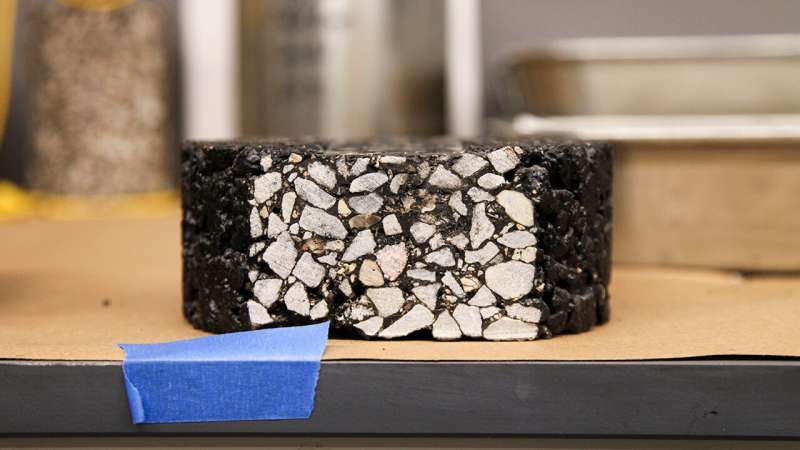
MAPIL specializes in a dry process, which allows the researchers to easily add the recyclables directly into the mixture before it's applied to a road surface.
"The form, shape and size of the plastics bring different challenges in how the material flows, how it behaves and how it mixes," said Punya Rath, an assistant research professor in the Department of Civil and Environmental Engineering who works at MAPIL. "So, we did extensive small-scale testing for almost an entire year before we moved to a larger scale out in the field with contractors."
One advantage of this process is that the researchers can test the mixtures in the field using a mobile research lab, which they developed and used for both the Stadium Boulevard and I-155 projects.
"It helps the Missouri Department of Transportation (MoDOT) immensely to have a mobile research lab on-site in the field that has the ability to rapidly test samples and provide results within 24–48 hours to better inform the process," Rath said.
-
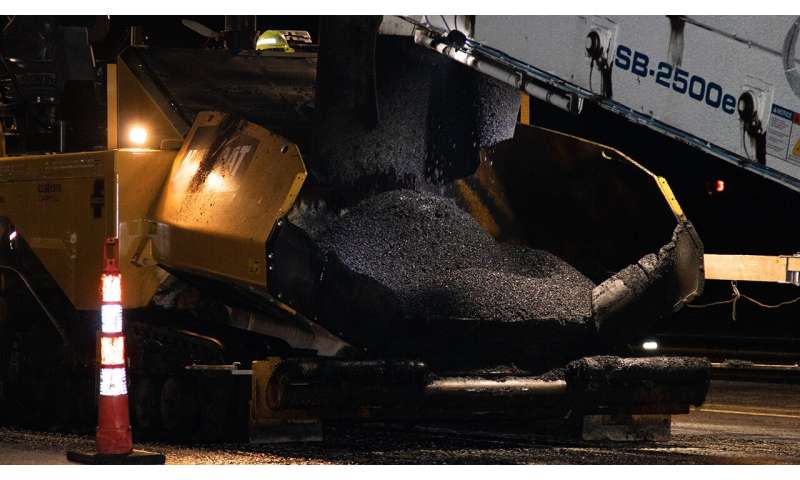
A pavement mixture using recycled plastic is applied to a section of Stadium Boulevard in Columbia near U.S. Highway 63 in 2021. Credit: University of Missouri -
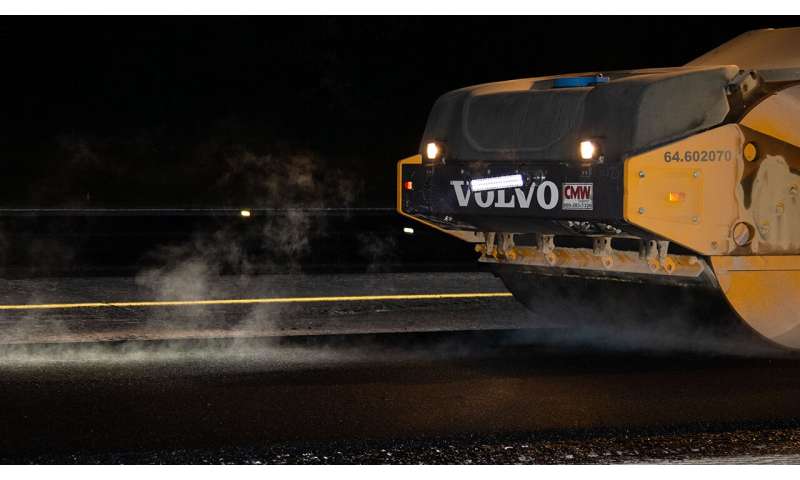
Steam rises from the newly poured plastic waste pavement mixture as an asphalt roller compacts the mixture into a smooth driving surface along Stadium Boulevard in Columbia in 2021. Credit: University of Missouri -
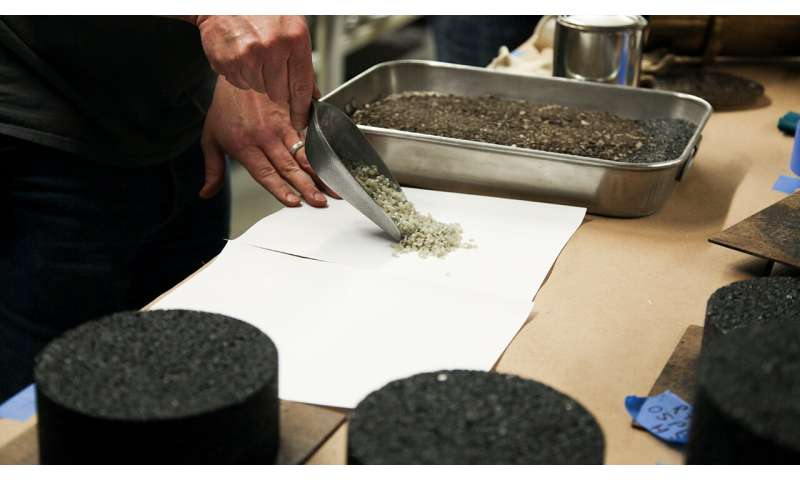
Lab staff in the Mizzou Asphalt Pavement and Innovation Lab show the plastic waste particles that are being added to the pavement mixture. The lab is located inside the University of Missouri College of Engineering. Credit: University of Missouri
Citing environmental concerns, Buttlar said the team makes sure everything they do is within the current limits as established by the Environmental Protection Agency (EPA).
"We are designing the material to be able to hold or capture the environmental by-products at the highest percentage for the longest amount of time. It's not going to be a 100% containment," Buttlar said. "Everything built in a natural environment will degrade over time, so that's why EPA has standards for everything, and we make sure we are safely within those standards."
Provided by University of Missouri





















